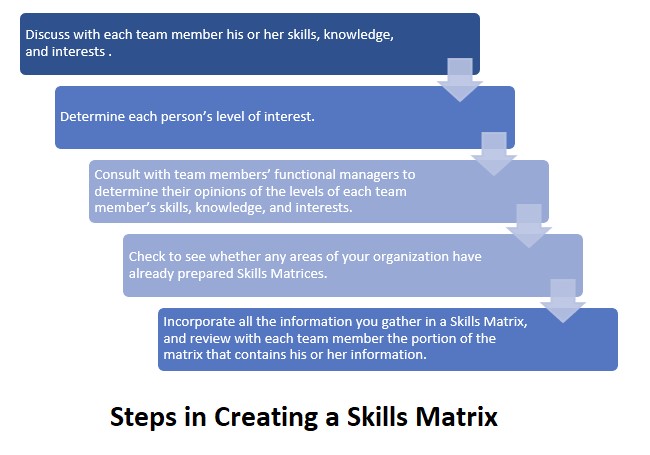The use of skill matrices in the workplace is spotty. Having worked in several industries (construction, retail, web development, games) it seems it is the kind of technique that companies will either go all-in on or not use at all; there is very little middle ground. As a result, skill matrices have an incredible level of variety in format and function to them from industry to industry and even company to company.
Some go for an ultra-simplistic approach (the chart merely denoting “trained” and “untrained” in certain skills) and others incorporate a very detailed and granular skills matrix (that denotes not only whether they are trained, but how well they are trained and whether they are skilled enough to instruct or direct their own learning). But perhaps I’m getting ahead of myself.
What is a Skills Matrix?
Simply put, it is a chart that tells you who knows how to do what in your team or company. As I already mentioned the level of detail may vary, but a skills matrix will always tell you whether somebody has been trained in a certain process, technique, or tool or not.
So Why Should I Use One?
It depends on what position you are in a company and what industry you’re working in, but at a very basic level it lets you know what people’s skills are, and therefore what tasks they are capable of performing. Much like a CAIRO chart, this is information that can technically be shared by word of mouth, but particularly in a large organization that is incredibly inefficient. Peoples’ memories aren’t perfect (particularly if you’re the supervisor of 30 or more employees), and reference tools like this help prevent mistakes from being made.
Depending on the industry a mistake in assigning someone who isn’t proficient in a task can be merely frustrating (someone who has never studied C++ being assigned a task that requires it, setting you back a day) or catastrophic (wrongly assigning someone untrained with an industrial bandsaw and the safety requirements for using it to one). In either case avoiding this kind of mistake is preferable.
What Are The Levels Of Proficiency?
As mentioned, these vary from company to company, but generally follow a vague 4-5 level format.

Level 0: Completely Untrained.
Level 1: Often referred to as “novice”, “trainee”, or “learner”, this level denotes they are in the process of being trained. They have a basic enough proficiency to potentially complete the task, but will likely take longer than the average worker and require supervision to make sure they don’t accidentally stray from specifications. This level is often absent from office settings, where on-the-job training is less common (though not unheard of).
Level 2: Usually referred to as “practitioner”, or simply “trained”. This denotes an average level of proficiency in the task or skill. They can meet all requirements and time constraints given no unforeseen delays. In simplified skill matrices, this is the only skills level besides Level 0.
Level 3: This is the least consistently defined level name-wise. I’ve heard it referred to as “developer”, “highly proficient/trained”, and “experienced” among other things. This is the level where an employee has a strong grasp on the task and can be trusted to consistently problem solve (reducing unforeseen delays as they are experienced enough to work around an issue without approval) and reduce iteration time without cutting corners. These are going to be your industry veterans or talented up-and-comers.
Level 4: “Coach”, “master”, “instructor” are common names for this level, among a few others. These are those that encompass all the skills of the previous level when applied to their own work, with the added proficiency to clearly and effectively train others in the process or tool.

How Else Does This Help My Business?
In addition to preventing incorrect assignments and ensuring every employee is where they need to be, it also allows you to plan for training sessions. If a large part of your workforce is untrained or partially trained in a specific skill, that significantly constrains your ability to assign shifts. If you only have three people trained on a certain tool, you are utterly reliant on those specific three people to perform tasks using it and are very vulnerable to attrition and are heavily delayed by any sick days taken.
Identifying problem areas allows you to take steps to fill those gaps and improve, which is something you should always be looking to do as a supervisor. As an employee, this allows you to more effectively search for opportunities for new training. More varied training means more opportunity to pick up shifts, and more opportunity for advancement.
